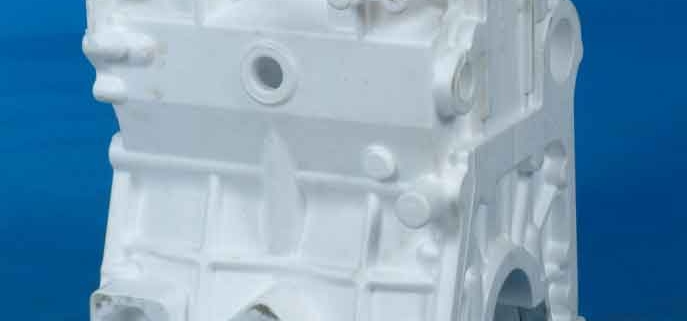Lost foam casting has strong vitality because of its quick and good green environmental protection characteristics. Especially in recent years, the development momentum has the potential to break the bamboo. The lost foam casting process has precise casting shape and almost no allowance, which is in line with the lightweight and precise casting. The development trend of complexity and complexity. However, the lost foam casting process covers many disciplines such as mechanics, chemical engineering, metallurgy, casting, and computer. It is a complex process technology that combines knowledge and application technology. Due to the use of dry sand molding, the change of objective conditions such as the actual gasification wall negative pressure greatly simplifies the production process, shortens the process flow, greatly facilitates production, improves productivity, improves the labor environment, and reduces labor. Strength, its advantages are obvious.
The lost foam casting is very special, the dry shape does not have any adhesive, and the real and casting system does not need to be taken out, which greatly improves the design freedom of the casting and improves the surface finish and dimensional accuracy of the casting.
1. Process analysis of lost foam casting aluminum
In the filling process, in the filling process, under the strong heat radiation of the high temperature molten metal, an irregular gap layer is formed between the liquid metal front and the foam pattern. Taking the bottom note as an example, the front edge of the molten metal is pushed forward in a “concave” shape, and the corresponding foam pattern end is zigzag or finger-type retracted. The solid slag and the liquid phase foam which are not completely cleared at the forefront of the alloy flow in the direction of escape of the gas. The gas exists in a small molecule state and is easily excluded by the negative pressure, and the solid impurities are blocked on the inner wall of the coating. That is, the surface of the casting forms a surface slag pit, which is the main reason why the lost foam casting has a smaller internal slag hole and the outer slag hole protrudes: the liquid phase foam is also discharged at the metal-coating interface, and is partially coated. Adsorption, partial secondary vaporization, and secondary vaporization of the gas mostly overflow, and a small amount of intrusive metal forms surface pores. The riser of the casting is generally designed at the top, and it is a dark riser. It cannot obtain high-temperature metal by means of refilling. The aggregated metal is all metal after being cooled by vaporization and heat absorption, the shrinking effect is not good, and the shrinkage ratio is increased. . The pores, slag holes, shrinkage holes, and carbon defects have similarities in the process control of many lost modes, and they are not contradictory. Therefore, the vanishing die pores are the main line here, and the prevention measures are explained together.
(1) Definition of pores: During the solidification process, the bubbles trapped in the metal form pores in the casting, which are called pores.
(2) The pores are divided into intrusive pores, wrapped pores, precipitated pores, endogenous reaction pores, and exogenous reaction pores.
2. Analysis of the causes of the porosity defects in the lost aluminum mold
The reasons for the occurrence of air holes in lost foam casting are as follows:
(1) Foam model gasification decomposition to generate a large amount of gas and residue can not eliminate the mold in time;
(2) Dehydration of aluminum water is poor, and the pouring process is unreasonable to cause slag holes;
(3) The pouring system is unreasonable;
(4) The pouring temperature is unreasonable;
(5) The location of the sprue is unreasonable;
(6) The permeability of the coating is poor or the negative pressure is unreasonable, and the permeability of the filling sand is poor;
(7) The pouring speed is too slow, fail to fill the pouring cup, expose the sprue, entrap the air, inhale the slag, and form the carrying hole and the slag hole;
(8) The capacity of the gate cup is too small, and the molten metal forms a vortex, which invades the air to generate pores;
(9) The joint between the sprue cup and the sprue and the gating system is not well sealed;
(10) The particle size of the sand is too fine, the dust content is too high, and the gas permeability is poor. The vapor can not remove the coating in time to form pores or wrinkles.
3. Process measures to control porosity defects
(1) selecting suitable model materials;
(2) the use of the gating system and the insulated riser;
(3) Improve the gas permeability of the coating, and the quality of the lost foam coating is critical. In the case of mass production, the gas permeability of the paint is regularly checked, and the particle size of the aggregate is adjusted in time. Since the binder and suspending agent of the coating contain organic matter, the summer and autumn seasons should pay special attention to the fermentation mildew of the coating. The qualified castings cannot be separated from the best coating, and the quality of the coating is not light;
(4) The pouring temperature should be suitable;
(5) Control of dehydrogenation and slag removal time of aluminum water;
(6) Reasonable pouring position;
(7) Reasonable casting process and negative pressure.
4. Production principle and process flow
The method is made into a foam molding model according to the EPS process, and the special coating is applied. After drying, it is placed in a special sand box, filled with dry sand, three-dimensional vibration is tight, pouring under vacuum, the model gasification disappears, and the metal replacement model The casting is the same as the foam molding mold, and after condensing, the vacuum is released, and the casting is taken out from the loose sand for the next cycle.



